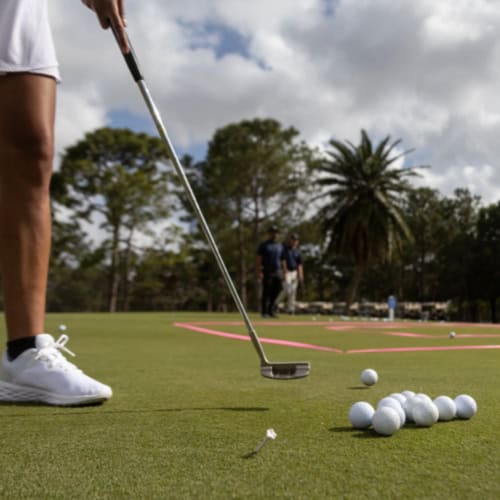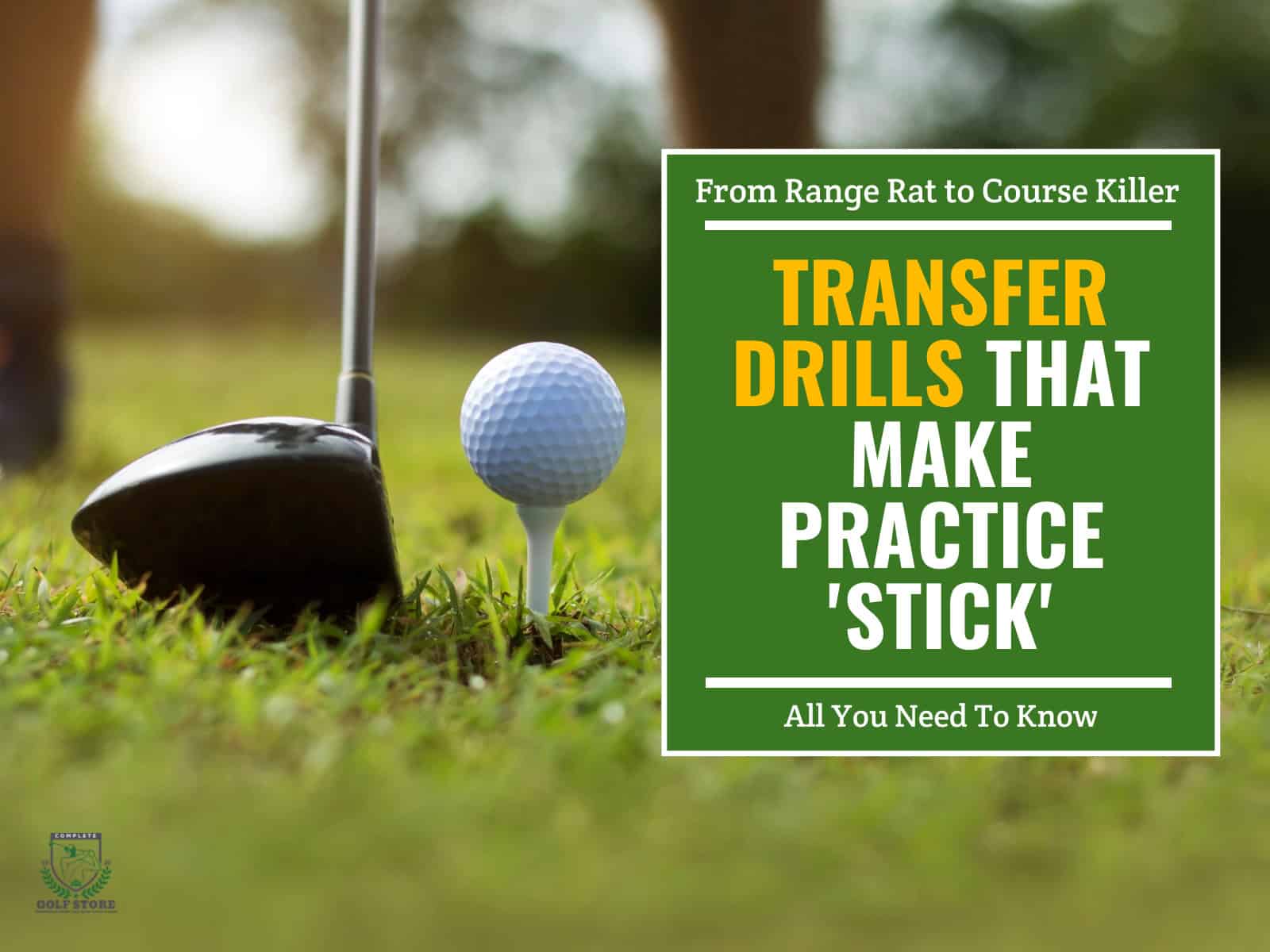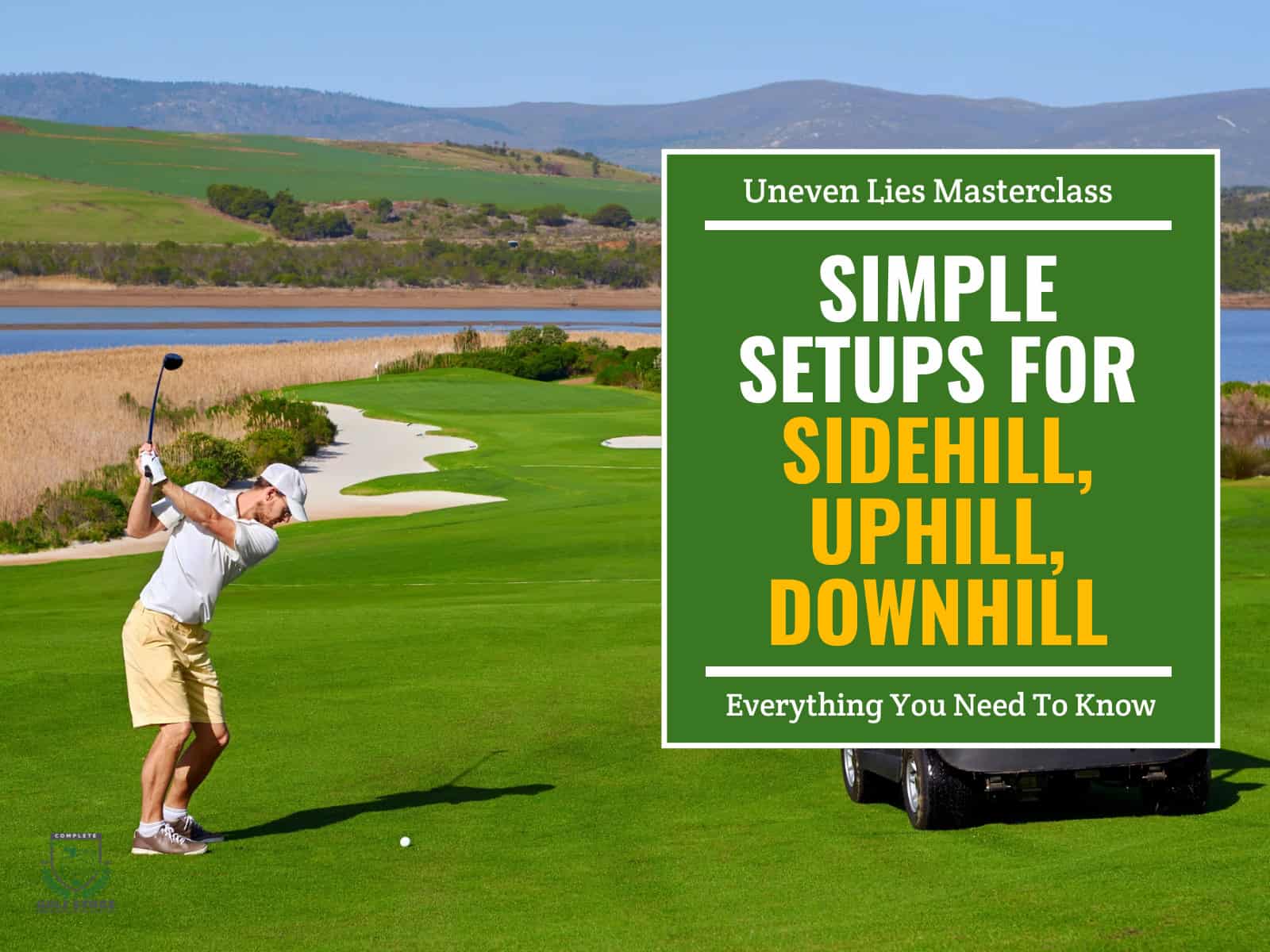Golf lessons don’t come cheap—$125 an hour adds up fast. The question is, are you getting your money’s worth or just spinning your wheels?
A good coach can point the way, but it’s on you to make the changes stick. Too many players walk out of a lesson feeling sharp, only to lose it by the next round. That’s wasted cash.
This guide lays out a simple system. You’ll learn how to prep before the lesson, record the right way, turn feedback into drills, check yourself between sessions, and time your next lesson for real progress. If you follow through, every dollar you spend will work twice as hard.
- 1) Lesson Preparation
- 2) Recording Techniques
- 3) Converting Lessons into Drills
- 4) Self-Checking Methods
- 5) Timing Next Sessions
- 6) Applying Lessons on the Course
-
7)
Frequently Asked Questions
- 7.1) How much practice time should I commit between $125 lessons?
- 7.2) Should I travel farther to find a coach with a launch monitor?
- 7.3) What’s the best way to balance range practice with course play?
- 7.4) How do I avoid reverting to old habits under pressure?
- 7.5) Is it better to buy a package of lessons or pay one at a time?
- 7.6) How can I tell if my drills are actually improving my swing?
- 7.7) What’s the biggest mistake golfers make after a lesson?
- 8) Final Thoughts
Lesson Preparation
A little planning before your lesson can double the return on your investment. When you walk in prepared, you and your coach can skip the small talk and dive straight into improvement.

Set Specific Goals
Every good lesson starts with clarity. Don’t just show up hoping for a magic fix. Write down your biggest miss, be it a slice, hook or thin contact, and share it with your coach. If you know what shot shape or feel you want, you’ll give your coach a target instead of a blank canvas.
Collect Baseline Data
Numbers don’t lie, and neither does video. Record a few swings before your lesson with a driver, an iron and maybe a wedge. Jot down simple stats like how many fairways you hit or how often you get up-and-down.
These give you a baseline so you and your coach can see real progress instead of guessing.
Be Ready for Efficient Work
Time is money, and at $125 an hour, wasted minutes sting. Show up with clean clubs and the right balls. Have your tripod or phone ready for recording.
Even better, send your coach your goals and swing video before the session. That way, you spend the lesson fixing, not fumbling.
Recording Techniques
If you only trust your feel, you’ll get fooled. What feels like progress may just be a lucky swing. Recording gives you proof, not guesses.

Use Multiple Angles
Set up your phone face-on, then down-the-line. Add a quarter view if you can. Each angle tells a different story about alignment, swing plane, hip motion, etc.
If you’ve got the setup, even an overhead view can reveal things you never noticed.
Slow Motion & Tools
Fast swings hide the truth. Slow motion shows where the club drifts, where your hands rush and what your body is really doing at impact.
Use frame-by-frame apps with annotation features. Draw lines, compare swings and stack your swing side by side against a past version or a model player.
Establish Benchmarks
Don’t just film at the end. Record the first swings of the lesson, then again mid-way, then once more before you leave. That sequence becomes your timeline. Later, when doubt creeps in, you’ll have the evidence to see if you’re on track or sliding back into old habits.
Converting Lessons into Drills
Knowledge fades fast if it stays in your notebook. The real work is turning what your coach told you into repeatable actions you can practice without supervision.

Focus on Priorities
Don’t try to fix everything at once. Pick two or three key adjustments from the lesson. Too many swing thoughts pile up like traffic on a crowded highway, and nothing moves. By narrowing your focus, you give yourself a chance to actually groove the change.
Create Targeted Drills
Every drill should attack a specific problem. If your clubface drifts open, use an alignment stick across your hips to check rotation. If tempo is your weakness, hit a series of half-swings counting “one-two-three” in your head. The drill should be simple enough that you can feel progress after a few reps.
Make Practice Accessible
The best drills are the ones you’ll actually do. Keep a wedge in the garage and rehearse short swings. Use a stick or club on the carpet to check alignment indoors. When practice is easy to access, you’ll build consistency instead of excuses.
Small, sharp drills cut deeper than endless buckets of balls. And once they start to stick, you’ll see why your coach’s hour is only the beginning.
Self-Checking Methods
Progress only counts if you can prove it. Guessing based on a few good shots leads you right back to old habits. A self-check routine keeps you honest.

Video & Feedback
Film yourself during practice, then line it up against the clips from your lesson. Look for the same checkpoints your coach emphasized. If your backswing or impact position doesn’t match, you’ll see it instantly.
Feel vs. Real
Your swing often feels one way but looks another. Pay attention to the cues your coach gave you—like “weight forward” or “hands lower.” Then test whether the ball flight agrees. If the flight disagrees, your feel still isn’t real.
Track Stats
Numbers cut through emotion. Keep a simple record of fairways hit, distance gaps or up-and-down percentage. If the stats don’t improve, the swing change hasn’t taken hold yet.
Written Cues
Right after a lesson, jot down the top two swing thoughts or drills in a notebook. Review them before practice or play. A quick glance keeps you from slipping back into comfort swings.
Timing Next Sessions
Momentum is everything. If you let too much time pass after a lesson, old habits creep back in, and you’ll feel like you paid for nothing. Keep the engine running by staying on a steady schedule.

Maintain Momentum
Practice the assigned drills right away, and do them often. Daily reps, even short ones, help lock the changes into muscle memory. The longer you wait, the harder it is to keep progress alive.
Know When to Return
Don’t rush back the next day. Give yourself one to two weeks of focused practice before scheduling another session. That window allows you to either groove the adjustment or uncover stubborn issues. When you meet again, you’ll bring your coach real evidence (video or stats) that shows exactly where you’re at.
Long-Term Maintenance
Even when things feel solid, plan periodic check-ins. A quick lesson can catch tiny slips before they snowball into bigger problems. These touch-ups also help you adapt your swing to different courses, conditions and pressures.
Applying Lessons on the Course

First, take your new moves into a practice round. Don’t worry about score. Use the round to test swings on real shots: uphill lies, fairway bunkers and tricky chips. You’ll see right away if the drill works when the ground isn’t level.
Next, shift your focus from outcome to task. Instead of obsessing about hitting the green, pick a small target, maybe a branch, a blade of grass or the left edge of the bunker. When you keep it simple, pressure fades and the swing flows.
Finally, mix practice with play. Warm up with a drill, then use it on the course that same day. The quick transition teaches your brain to trust the move under fire.
A key part of transferring practice to the course is alignment. Many players lose strokes by aiming slightly off target without realizing it. Learning how to line up a golf shot correctly ensures that your swing changes translate into accurate results when it matters most.
Frequently Asked Questions
Golfers often face the same doubts after spending $125 an hour on lessons. Here are clear answers to common questions so you can stretch every dollar further.
How much practice time should I commit between $125 lessons?
Plan on at least three practice sessions for every lesson. Shorter daily reps work better than one long grind, and consistency builds memory.
Should I travel farther to find a coach with a launch monitor?
Yes, if you can. A launch monitor gives you hard data (ball speed, spin and strike location) that feel alone can’t confirm. It’s like using an x-ray instead of guessing from symptoms.
What’s the best way to balance range practice with course play?
Split your time. Use the range for drills and mechanics. Use the course to test them under pressure. Both matter, but the course tells you if the skill really holds.
How do I avoid reverting to old habits under pressure?
Keep it simple. Focus on one swing cue or a small target. Pressure fades when your brain latches onto something specific instead of fearing the result.
Is it better to buy a package of lessons or pay one at a time?
Packages usually save money and keep you accountable. They also give your coach a roadmap for your improvement instead of one-off fixes.
How can I tell if my drills are actually improving my swing?
Check your stats—fairways, greens, short-game saves. Pair those with video comparisons. If the numbers climb and your swing looks closer to the lesson model, the drills are working.
What’s the biggest mistake golfers make after a lesson?
They go back to autopilot. Hitting balls mindlessly feels safe, but it erases the change. The mistake isn’t bad mechanics; it’s forgetting to apply the new ones when it matters most.
Final Thoughts
Golf lessons cost real money, and the clock ticks fast once you step on the tee with your coach. But when you prepare with clear goals, record smartly, drill with purpose, check your progress, and time your sessions right, that $125 stretches far beyond the hour.
Think of each lesson as a seed. Without care, it withers. With the right system, it grows into lasting change you can trust under pressure.
The next time you book a lesson, remember that it’s not just what your coach teaches in sixty minutes, it’s what you do with it after.
One simple way to make your practice drills more effective is by using alignment sticks to improve your takeaway. They provide clear visual feedback, helping you build consistency and reinforce the swing changes from your lessons.





